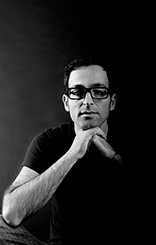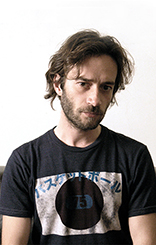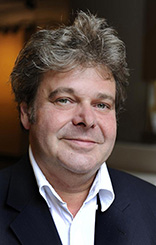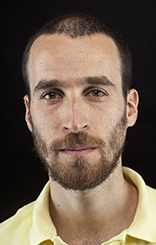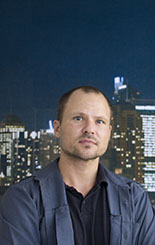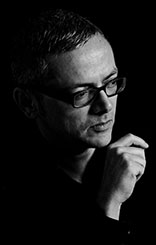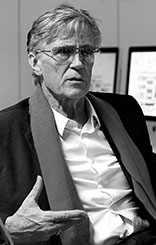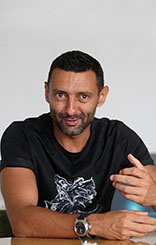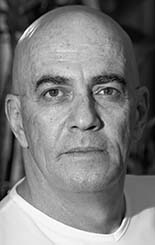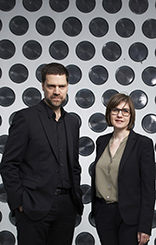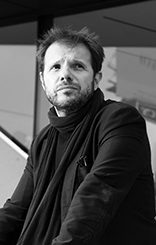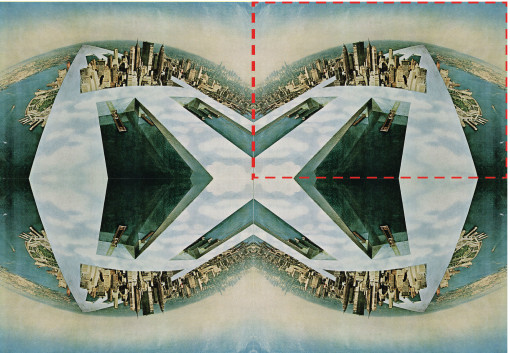
Evolution: The Architecture of Future Mankind
We are living a borderline phase of the history of Mankind.
The change involves not only the city environment as places of sharing, but above all human beings.
Cities and machines are changing quickly, whereas man has recently started to become aware of the changes and the decisions that it’s compelled to make.
Literature and cinema tackled the matter of the evolutionary direction by describing a background made of frenetic technological progress, loss of human nature and moral responsibility, anxiety and struggle.
Human being is already forced to face risks and mutations of the Nature by adapting its own essence and survival instinct.
During this process of mutation the cities will change in line with their inhabitants influenced by environmental forces and driven by an epigenetic development.
The new research lead by Cityvision investigates the future, which will be materialized in the evolution and the resolution of the relationship between human beings and technology.
In this new research, Cityvision will underline EVOLUTION: The Architecture Of Future Mankind.
Francesco Gatti
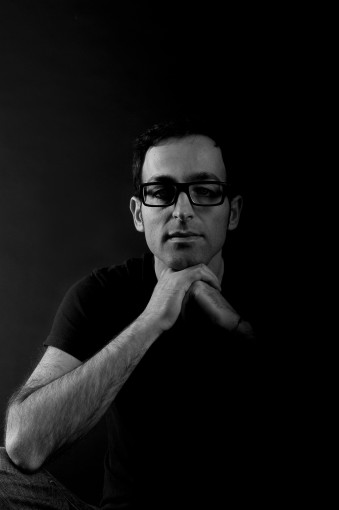 I believe and I hope none of those three cityvision scenarios will actually take place. I’m confident that the human being intuitive intelligence will create another possible architecture for its own future.
I believe and I hope none of those three cityvision scenarios will actually take place. I’m confident that the human being intuitive intelligence will create another possible architecture for its own future.
The present human path is getting globally influenced by the technological evolution and the mechanistic behavior and development of the corporations. Both of those elements are a consequence of the victory of human rational knowledge over the intuitive one. The victory of Socrates over Lao Tzu.
The world somehow decided to follow the path of the “west”, the path of scientific knowledge, but any path is only a path, and there is no affront, in dropping it if that is what our heart tells us. Does this path have a heart? Lately there are many signs that reveal in a global scale that we are starting to doubt it.
If the west represents the rational “male” side of humanity and the east the intuitive “female” side, I foresee a female future or at least an architecture where the female and male elements are better balanced.
The maximum expression of the higher levels reached by the western minds are the latest scientific discoveries in quantum physics; if we carefully analyze the results of those discoveries is evident that Hindu, Buddhist or Taoist thinkers reached exactly the same results thousands of years ago. So this rational path is really as proficient as we thought? It can really bring human kind in the construction of its own remote future architecture? Maybe not.
Refusing to focus our energies on the development of science and technology doesn’t mean regression or “going back to the past”, but if we shift our focus on the development of intuitive consciousness instead than the rational one can actually mean evolution. Real evolution. Evolution that doesn’t bring humanity to its extinction but to its real connection to the existence in its multiple dimensions.
Giacomo Costa
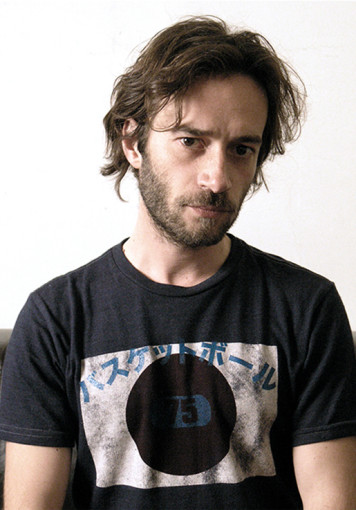 These three scenarios are strictly linked with one another, and the first of them determines the third, while the second is a part of the solution to the problem.
These three scenarios are strictly linked with one another, and the first of them determines the third, while the second is a part of the solution to the problem.
Our society has interpreted the challenge of technological development by assigning a lot of what we do to machines, which are becoming increasingly irreplaceable in our everyday lives and making our future and our concept of wellbeing entirely dependent on technology; without it, we would no longer be capable of doing most of the things we do.
This model of development is turning out to be ecologically unsound, especially in view of the rapid growth of highly populous nations such as China and India.
These peoples’ understandable wish to adapt their lifestyles to match that of the west is causing exponential growth in consumption of energy and raw materials, and therefore in pollution. These factors threaten to devastate ourecosystem and therefore life on our planet.
CO2 emissions in the atmosphere, the principal cause of global warming, are clearly speeding up the process of climate change; we are seeing phenomena such as rising sea levels and warming of the oceans, which took eons in the past, condensed into only a few years. The sudden prevalence of typhoons and monsoon rains in the Mediterranean is challenging forecasting models consolidated on the basis of years and years ofstatistics and centuries of observations and testimony, demonstrating the impact of our behaviour on the environment.
But today’s governments do not seem to have any intention of reversing the direction of growth, and the consequenceswill be catastrophic for humanity if we continue to grow,assigning only secondary importance to the environment and relying on a monetary and financial economy which isbased on the concept of non-stop growth.
The involution many people refer to ”successful degrowth”is not in my opinion the only way out of this self-destructive spiral of ”progress at any cost”, but a phase aimed at achieving a balance better described by the model of the”stationary economy”.
Population, energy consumption and use of resources must be in a stable balance kept within the parameters of sustainability, and flows of materials and energy must be as low as possible, from production to consumption.
It would also help to reconsider what actually determinesquality of life, which we now identify with compulsive consumption, being as we are dependent on symbols and forms of behaviour imposed by the production system, the actual usefulness of which we rarely question. It is very important to invest in research into new materials and new energy sources, going back to making products that last for years and can be repaired, reusing our manufactures rather than destroying and recycling them.
Neil Spiller
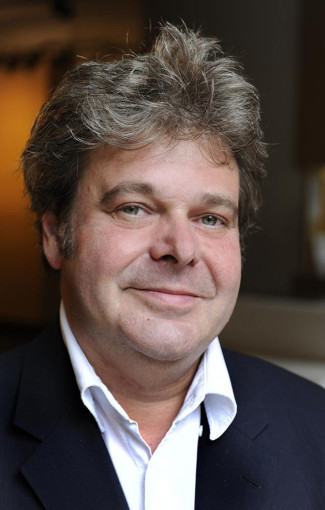 The Evolution of the City is Surreal
The Evolution of the City is Surreal
The city is a massive engine of chance; we are at once infatuated with it, inebriated by it, entertained by it, scared and scarred by it. We are cast, like drunken sailors, in its vagrant geometries, its sublime vistas, its random street-life and its astounding possibilities for personal experience. We navigate the city and our lives in constant negotiation with other people, animals and things. These negotiations are spatially multidimensional. At the same time, we have to keep our wits about us, for the city is a bewitching, feral lover where love and death call in equal measure.
Cities do not just occur at the anthropomorphic or the super-anthropomorphic scale, they happen in rooms, within carpets and in mouths; they also might happen across galaxies. This kaleidoscopic perception of the city was recognised and pursued vigorously by the Surrealists, who explored its magnetic desires in paintings, graphics, sculpture, prose, poetry and performance, but oddly in relatively few examples of architecture and building. However, these Surrealist researches and a lot of what was inspired by them subsequently, have much to teach us about the possibilities of contemporary architecture and how we might educate the architects of the 21st century.
The contemporary city is a myriad of associations, of genealogies, that stretch deep into the past and continue into the future. The products of culture and design are continually resurrecting themselves, palimpsest on palimpsest – Chinese whispers in the neon night. Someone once told me, and it may not be totally true, that if one took a whole human being’s brain in 1900 (its sights, sounds, emotions and thoughts throughout its life) and called it one unit, then the equivalent in the year 2000 is 10,000 units. For us, the city is an interconnected maelstrom of electronic communication, characterised by immediacy to information and people – everyone and everything somehow within reach.
Yet do we all not despise the world as is, the lies, the hollow rhetoric, the capitalist imperative that blinds the eye and steals your dreams, vacuous consumerism, the dead hand of committees, regulations and the bureaucratic mutants that enforce them? Do we still not become unsettled by the uncanny? Do we still not peer into the ossuaries of the city and marvel at the bizarre juxtaposition of objects and times that use has deserted. Do we still not desire, love and lust? Do we still not actively search and thrill for hybridity, anomaly, and rejoice in the delightful swerve of everyday life? We do, and this is Surrealism writ large, aided and abetted by the hyperlinked vicissitudes of contemporary technologies both virtual and biotech.
The evolution of the City is Surreal.
Joshua Frankel
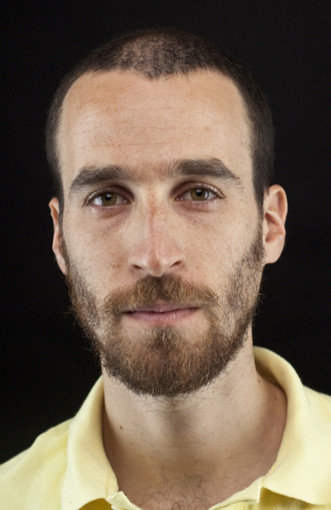 The speed of an evolution is driven by the speed at which adaptation is possible and the magnitude of each adaption.
The speed of an evolution is driven by the speed at which adaptation is possible and the magnitude of each adaption.
In animals, adaptive changes occur only at the moment of reproduction and each change tends to be extremely subtle. So animals (or at least those big enough to see easily with the naked eye), tend to evolve very slowly. Each adaptation is tested thoroughly, but sometimes this slowness leads to extinction.
Urban spaces evolve a bit faster; adaptive changes occur at moments of renovation and rebuilding, and those changes can be quite significant. Speed is gained at the expense of potential colossal mistakes. New York City is always changing and has profited enormously from its flexibility, but its landscape includes miscalculations woven together with its triumphs.
Computer programs can evolve extremely quickly. Adaptation occurs with every change to a line a code, adaptations can be subtle or significant and – unusually – any adaptation can be perfectly undone at any time by “rolling back” to a previous version. They have both speed and protection from costly errors, so any shortcomings would seem to originate with the designers who are, of course, only human.
Can we create physical structures that can adapt quickly, significantly and with error-protection? What will happen to our urban spaces if we do? Could this protect us from extinction? What will happen if our physical structures, like our computer programs, can evolve faster than we can?
Chris Bosse
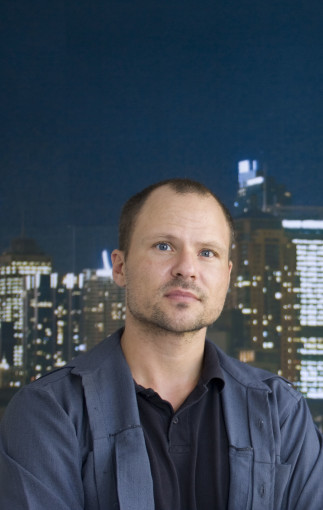 Technology acceleration and transfer has meant fundamental changes to our society. But architecture and city design is barely affected at all because architecture is built to last: Forever. The reason: Capital investment. But architecture needs to adapt: to respond and grow in order to keep up with technology, culture, and society. Cityvision’s three possible scenarios present us with challenges. For me Evolution is the only answer. Man, nature and technology in harmony. We cannot refuse technology and go back to the past. But whether this will mean physically melting with technology until the elimination of the borders between humans and machine is yet to be seen.
Technology acceleration and transfer has meant fundamental changes to our society. But architecture and city design is barely affected at all because architecture is built to last: Forever. The reason: Capital investment. But architecture needs to adapt: to respond and grow in order to keep up with technology, culture, and society. Cityvision’s three possible scenarios present us with challenges. For me Evolution is the only answer. Man, nature and technology in harmony. We cannot refuse technology and go back to the past. But whether this will mean physically melting with technology until the elimination of the borders between humans and machine is yet to be seen.
The prototype of the (American) City has proliferated across the globe. The only problem is: the way we live and work and communicate has radically transformed: The Internet is the new workplace. Yet the architecture around us is still the same and is widely based on old and tired technology.
The challenge of course is the average process from design to construction of a large scale building is five years. In the meantime our telephones were upgraded several times, our computers written off twice, and our job spec has transformed our work life.
Our needs have changed and now we want fresh air, access to natural light, an active lifestyle, the flexibility to reorganize our work practices, communication within the office, breakout spaces, natural materials around us, and being immersed in nature.
So the challenge is how do we revamp existing buildings, without having to pull them down and waste all the money and energy invested in them in the first place. And how do we design buildings that are open, versatile, adaptable and reactive to external forces, contemporary times and changing needs.
We recently explored this in an exhibition installation in the ‘CUSP’ exhibition, currently on a two year tour in Australia.
‘Cloud City: An urban ecosystem’ is a sculptural rendition of my vision of a future city. A soaring, stretched membrane-cloud anchored to the ‘city’ on the gallery floor by high rise towers that have been re-skinned and revitalized.
I believe that the future is not about what buildings look like, but how they perform, interact and how they connect with each other. Think of a coral reef, where thousands of species thrive in coexistence of each other and the elements, air, water and sun. The reef is like the city of the future.
The networked city of the future is a connected, inter-dependent organism where buildings are not singular structural entities (designed, serviced and accessed as isolated units), but part of large networked system.
A distributed cloud communicates, shares smart building technology and joint infrastructure, connectivity and data transfer allowing transport, housing and urban infrastructure to adapt in response.
The buildings of the future will be like nature itself too, like a cocoon, the symbol for change and transition from now to the future, the transition from one state to another, from larvae to a butterfly.
Outdated passive building facades of the skyscraper are replaced with high performance smart translucent cocoons that create their own microclimate, generate energy, collect rainwater and improve the distribution of natural daylight. By reskinning these inefficient buildings the past is transformed into ‘super-abled’ buildings.
One could argue that the most flexible structures are the ones that can house anything. But the 21st century is about mass customization. Individual expression, being reactive rather than static, and accommodating constantly changing needs into a constantly updateable architecture. That is the future. Yes let’s reinvent Vico’s holistic perspective with its placement of human existence into an idea of an evolving Nature.
John Beckmann
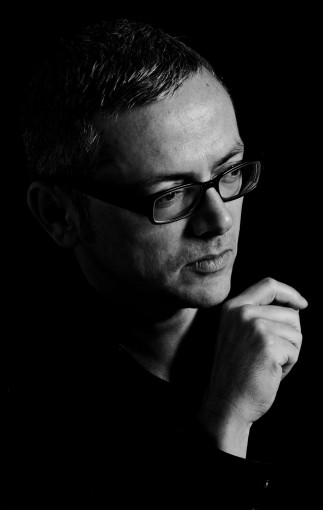 Googlika, or the world of infinite plunder
Googlika, or the world of infinite plunder
The island of New York, like London, and a few other places, will be impregnable fortresses for the uber rich. Their perimeters will be secured by invisible sensors poorly disguised as forests of palm trees, and enforced by robots programmed to incinerate any intruders.
The millions who are deemed “useless capital,” will be forbidden access to the prime-time citadel under any circumstances. These debtor outcasts will live in the so-called neither-neither zones, where the dead will be indistinguishable from the barely living, their bodies harvested for ripe organs to be supplied to the ruling god-like oligarchs. The virtuous will live like the pharaohs of Egypt, and extend their lives indefinitely; their fortunes will soar to vast unimaginable heights due to yield on compounding interest.
This new world will come to be known as Googlika, where corporations are people, and money has replaced free speech. $58.4 million dollar sculptures of puppies will serve as lawn ornaments, and as further testament to the systematic theft, plunder and pillage of the world by a small cabal of global financial oligarchs.
The American dollar will be used as wallpaper and gold bullion will be used to tile the cavernous rooms of the nouveau plutocrats. Ingenious ponzi schemes will be invented by the N.S.A. collaborating with teenage Ukrainian programmers to replace any previously known forms of work. In fact, the new definition of work will be how one chooses to define theft.
Vast sums of money will circulate the globe, as more and more bank accounts will be hacked, depleted, and hacked again. And as can be expected, there will be budding entrepreneurs hocking the next wetware to the doped up banksters at Goldman Sucks, for their forthcoming trillion dollar IPO.
Horrific unspeakable violence will be a substitute for sex. And avarice will be suitably rewarded, admired and widely practiced. In Googlika, the architects will be errand boys paying lip service to the pin-striped gods. Their shit will be your sustenance.
Derrick de Kerckhove
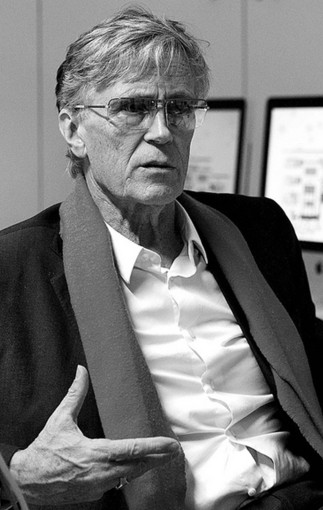 “Metropolitan space is equally irrelevant for the telephone, the telegraph, the radio, and television. What the town planners call ‘the human scale’ in discussing ideal urban spaces is equally unrelated to these electric forms. Our electric extensions of ourselves simply by-pass space and time, and create problems of human involvement and organization for which there is no precedent” (McLuhan, 2003: 125).
“Metropolitan space is equally irrelevant for the telephone, the telegraph, the radio, and television. What the town planners call ‘the human scale’ in discussing ideal urban spaces is equally unrelated to these electric forms. Our electric extensions of ourselves simply by-pass space and time, and create problems of human involvement and organization for which there is no precedent” (McLuhan, 2003: 125).
The world is what I know of it and only that. Even what other people know about it that I do not know, or feel, or understand, once given a chance to find these things out, they come to my attention alone, hence to be known and equated by me only. The rest, that is everything that I neither know nor suspect, simply does not exist for me. Of course, it is different for each one of us and contains only what we see and what we are exposed to. Rosane Araujo in her essay The City is me, defines “Orbanism” is the contraction of urb and orb. “The 21st century urbanism will transmute into orbanism, where, given that we would no longer have borders or limitations as reference, we would treat as city not only the world, but also the known and yet to be known universe. The informational context in which we live, including architecture and urban planning will be thought in terms of communication accessibility, not only in terms of road and water infrastructure. Cybertecture is the conception of an architecture in which the tools and questions at stake are immersed in the new technological and digital environment that we now inhabit. It is not the world that is globalizing, it is us. The work of the cybertect is to create trustworthy routes and useful environments in cyberspace and between cyberspace and the real space. Cyber culture implies “seeing through” matter, space and time with our informational techniques. Technology enables us to have physical access and displacement to distant regions, creating a situation where we are contained in the global sphere. When we think globally, communicate and trade from the place that we occupy, we include the global sphere internally. We contain the earth in our minds and in our networks.
Here is a simple story I was told in McLuhan’s class by one of his friends that help one to find a way to a revolution in spatial sensibility: Michael Smart, a toponymist based in Toronto, whose job at the time was to find the first nation names of lakes and hills in the vast expanses of bush far north of the city, told a stunned audience at one of our Monday Night Culture and Technology Seminars that when, as night was rapidly falling, he asked his Indian guide if they were “lost”, the answer that came was. “No, we are not lost, the village is lost”. This response implied a radical revision of a human’s relationship to space, one that we can associate with very early experience of space by non urban dwellers. In other words, for the guide, space was not something that can be traversed, as it is implied in Shakespeare’s most famous quote: All the world’s a stage…It was, as can sometime be surmised from the Iliad and the Odyssey, something that traverses or occupies the person. This story invites us to radically change our perception of the city, and of ourselves.
Henceforth places can move along with people. Indeed, the places we occupy on line are nowhere in particular, and, within our cellular phones we carry the world in our pockets.
This may seem to be pushing the idea of electricity as the extension of our central nervous system as far as architecture can take it, but it is also a way of giving organicity to technological environments and tools. It also helps to understand why the city should be privileged as the defining field, the starting point of a ubiquitous consciousness (also understood as the awareness of ubiquity).
Perhaps McLuhan most beautiful thought is relevant here: “In the age of instant information, we wear all mankind as our skin”.
Derek Pirozzi
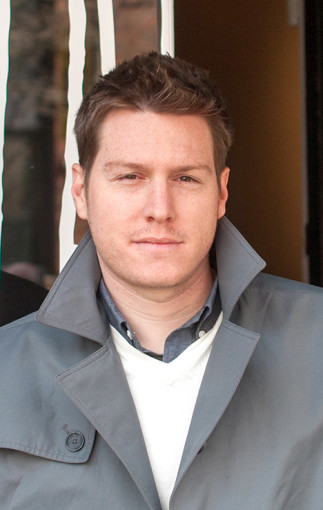 Conflict is inevitable.
Conflict is inevitable.
Prescribing our ancestry while nourishing the discourse of forthcoming conjecture, contention establishes our reality. Industrial science composes the nucleus. Technological progression becomes the celebration; the potentials of life and our inexorable fate of death. Contemporary cinematography continually attempts to simulate this supposition. In Neill Blomkamp’s Elysium, sociological themes explore the obscure lines of immigration, overpopulation, exploitation, segregation and hybridized anatomical metamorphosis. Implanted with a powered exoskeleton, Blomkamp’s protagonist symbiosis with robotics generates the ultimate investigation in mortality vs. moral responsibility. Separated from Earth, the avant-garde space station Elysium (the very symbol of monumental progression and superior medical conservation) becomes the counterpoint to democracy. Isolation and hierarchy become established cornerstones of an evolved automated society. Humanity confronts ethical extinction.
A new fundamental urban character will be influenced by erratic extremes; security will be the preeminent mentality culminating in the condemnation of public liberties. In a global society saturated by terrorism, piracy and cyber warfare, boarders become antiquated, nations become boundless. Safety is a concept, not a physical envelope. Will humanity begin to materialize a psychological citadel, devoid of valor, influenced by habitual and social self-destruction? The unrestricted urban domain confronts disintegration formulating aggressive surveillance producing a lack of exchange, physically and intellectually. At which point does the complexity of human and technological integration become irrelevant? The unification of a digitally amplified species has already begun (who doesn’t own a cell phone?) Undeniably, it is our primordial instincts of fear, anger, jealousy and greed which define our outcome. Technology determines humanity’s salvation, yet holds the key to our annihilation if summoned.
Harmony should be feared yet desired.
Wolf D. Prix
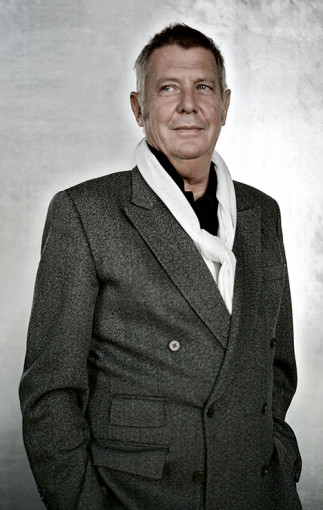 We can only agree with ‘Scenario1: Evolution’, but we would formulate it differently. We don’t see evolution as melting man with technology. We think that looking at evolution as an open system can help us find solutions for the problems at hand. Not capital, not technology alone, but rather strategies for thinking in complex systems will allow us to orient the future in a new way.
We can only agree with ‘Scenario1: Evolution’, but we would formulate it differently. We don’t see evolution as melting man with technology. We think that looking at evolution as an open system can help us find solutions for the problems at hand. Not capital, not technology alone, but rather strategies for thinking in complex systems will allow us to orient the future in a new way.
We believe that the city is the life form of the future. Already more than 50% of the world inhabitants live in cities, and the number is growing. We know that the city has many advantages, but every advantage usually also has a disadvantage. As architects our task is to enlarge the advantages and to diminish the disadvantages. If the population density of a city gets too large for its infrastructure to cope with it, we need new planning instruments. City planners need to learn new strategies, because mega cities with 40 million inhabitants cannot be centrally governed any more. We will have to think of the city as a complex system where – like in the brain – many independent entities are connected to form a large urban organ. New kinds of synapses will have to be formed.
The new planning instruments we are working on in our office take the development of the human brain as a model for the reality of our cities. The instruments allow us to simulate future scenarios that suggest possible future solutions. The brain solves problems not only either hierarchically or democratically, but combines both modes to find the best solution, in other words, it is flexible and adapts to the present circumstances. In a complex system we do not plan the future, but orient it in a flexible way, always reacting to the actual behavior of the whole.
We also currently study other parameters and paradigms that will have to influence the future planning of our cities. Planned infrastructure, technology and building developments based on capital cannot be sufficient any more to guide their developments. Energy is a pressing topic that has to be solved in the next decades, and it will also affect urban planning. We therefore investigate how building lines in city planning can be replaced by energy lines that are based on ecosystems and local climate conditions. This means that we research how the climate combined with new strategies for energy production through the built environment will change the morphology of a city. The goal is a balanced ecosystem within cities as well as individual city districts that produce their own energy from sun, wind, water and the earth and thus are energy self-sufficient and not dependent on fossil energy resources any more.
In effect we propose a new kind of master plan, a three dimensional spatial energy plan that will be the new instrument for the orientation of our cities.
‘Scenario 2: Involution’ is regressive and therefore in our mind not an option for thinking about the future. Progress means to progress, to step forward. Solutions for current problems are not found in the past, because the conditions of society and humanity now are fundamentally different from former times. We rather need to understand the problems and constraints of the present moment, and to solve them with forward thinking ideas.
‘Scenario 3: Extinction’ is a passive and rather lazy approach, gradually letting a system die in hope of a new and better beginning. The world does not function this way; we make reality, not reality us
Bostjan Vuga
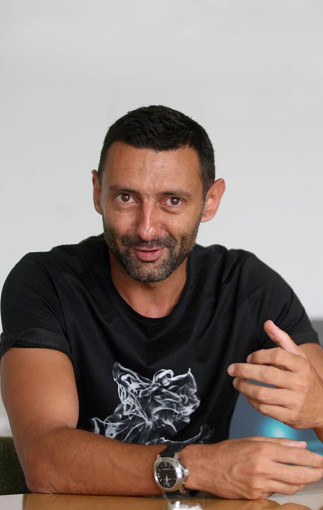 Ziggy’s House
Ziggy’s House
The house of the year 2022 is a Nomad house.
The nomadism of this house is not manifested by any kind of physical movement. The Nomad house is not adrift and it is not a kind of mobile wagon, on the contrary, it is immobile, anchored to its local site and almost dependent on its topological and geographical location.
The nomad house will never leave the place for which it is designed. The house is neither a repetitive modular house, nor a blown-up industrial object for “living in”. The house is not inflatable; you can not convert it into a backpack and carry it with you. The Nomad house is not a universally transportable home that has the ability to be mass replicated and placed in almost any environment.
So forget the houses of the future from your childhood, all these flying saucers, which could land everywhere and touch the ground with their tiny legs. Forget all the imagery of the seventies science-fiction movies and early tv serials: “Space1999” is far behind us and Ziggy is a retired man enjoying the draft of fresh, unpolluted air through his nomad house. He ages well; his body and mind do not show any drastic signs of fatigue or dementia. But don’t worry: he has his own clone hibernating in a special amniotic fluid, just in case he becomes bored of living and wants to switch off his life.
What a change! At the peak of his career he inhabited his mono-volume lofty bachelor pad, an escape bunker, not only away from his crowd of fans, but primary a container which protects him from smog, dirty water and acid rain. He felt good in his environmental bubble, where a total exclusion of anything from the outer world provided him with a perfect start for his sexual and hallucinogenic journeys. The environment in his pad was stable … nothing changed unless he pushed a button on the remote control. The new technology brought him an automatic sun plugged into a ceiling above his round waterbed. During his “after-concert deliriums” he would switch the sun on and, amid the darkest night outside, he would feel as if being driven away. In these moments he occupied his preferred embryonic position on the water mattress and wait, wait, wait … “The world is in here and I am self-sufficient in my pad …”
Today he occupies the nomad house. He inhabits and experiences the house as a constantly metamorphosing environment, a terrain of endlessly renewed migrations. Permeable to microclimatic variations and to the changing seasons, his nomad house responds to cyclical transformations of his lifestyles and the uses that these imply. His house is a four-season house where the conditions for a domestic nomadism are constructed. Ziggy migrates through different areas of the house throughout the year. The house is made from these meandering and pocket ambiences, which support a resilient intensity for the utilizations of certain living areas according to the season. Open to all of the variations of weather and time, the pockets of the outside spaces in the interior of the house enrich his living environment with a multiplicity of possibilities: eating inside or outside, hiding in the shadow or exposing oneself to the sun, being sheltered before the rain starts or looking out into a romantic scenery of the 21st century.
He feels the house enables him to reach primordial conditions he has always dreamt about: the ‘back to basics’ conditions where he finally feels a symbiosis with the world out there. Similar to his seventies pad, his nomad house of today presents him with a microcosmos, which is now permeable and porous, responsive to changes around it.
No remote control is needed. It is such a luxury, that he doesn’t even have to take any decisions. His living environment responds not only to what is happening outside, but to the changes of his mood as well. The house senses his melancholia during dark winter days and if this takes too long and appears to turn into a deeper depression, slight variations of a membrane color and a sound acoustic provide an enlivening effect. Mood facades allow rays of sunlight to pass deeper into his winter sleeping pocket area to stimulate his blood pressure in the morning.
The nomad house is the optimum fusion of physical meandering pocket areas/rooms and a sensorial interface embedded in the multi-layered membranes/walls. It is a perfect living and leisure environment for a retired star like Ziggy. It stimulates his constant search for comfort and wellbeing. In case of boredom it generates enough stress impulses to accelerate the beats produced by an already dated, but still fully functioning pace maker. Luckily, he doesn’t need a remote control to balance his heart-beat manually anymore.
The house does it for him.
Tarek Naga
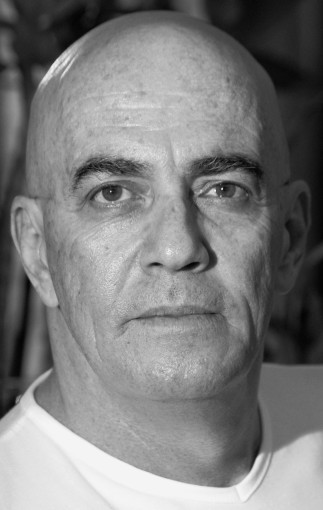 Prometheus Rebound: An Ontology of Future Architecture
Prometheus Rebound: An Ontology of Future Architecture
‘ . . . . And thine Omnipotence a crown of pain,
To cling like burning gold round thy dissolving brain.’
(Prometheus Unbound, Percy Shelly)
“Evolution – The Architecture of Future Mankind” presupposes an evolutionary process that will ultimately lead to ‘the elimination of the borders between humans and machine’. An inversion (and subversion) of such presupposition/statement leads to a different incompossibility of the future: “Revolution – Mankind of Future Architecture.”
Both axioms share the “future” as a “planomenon”, but each has a different a priori and consequently a different modus operandi … a möbius-like inversion of such planomenon. The essential phenomenon that should be at the core of all “future discourses” should be the ontological nature of mankind in the future. The paradigmatic problem is not essentially in the act of “elimination”, but rather in the “borders” between an uncritical prediction of “future humans” and “future machines” [and in the dialectic relationship between the two]. The failure to predict a revolutionary incompossibility of man and machine and remain within the worldview of a machinist paradigm is akin to using the Newtonian model to predict and reconstitute the future of quantum physics.
The “future architecture” and the “future mankind” do inexorably inhabit a Möbian planomenon in which a “Promethean Bound” (classical/past) becomes a “Promethean Unbound” (modern/present) that ultimately becomes a “Promethean Rebound”. In that regard, the futurist opera “A Victory Over the Sun”, was trapped in a retro-futurist paradigm and, not unlike the axiom proposed upon here, failed to foresee the potentiality of a shift in the incompossibilities of future architecture as a non-machinist and eventually a biomorphic model. In a “Promethean Rebound” futurist worldview [our] futurist opera should be “A Victory over the Godheads” instead.
Similarly, most futurist films of the 20th and early 21st centuries predicted an architecture of a decaying retro-futurism. Be it the 2019 Los Angeles of “Blade Runner”, “2001 Odyssey”, “Inception” or “Avatars” mostly presented a nihilistic futurist world inhabited by decaying 20th century like machines and replicates/androids, or a brave new world based on a genetic reengineering of the “industrial revolution” outmoded models. An archaic symmetry of the ancient world reigned supreme, and the machinist nuts-and-bolts intergalactic space structures were the norms of the “future”.
Futurist architecture of the early 20th century did not deviate much from the brave worlds of Ebenzer Howard, Bruno Taut, Tony Garnier, the machine aesthetic of Archigram or the Metabolism of Kisho Kurokawa. All predicted a “futuristic” future dominated by a machinistic-power paradigm. Even later “visions”, such as “Delirious New York”, presented a “Retroactive Manifesto” in which the metropolis becomes the “city of the captive globe” with “rapid and continuous changes” that are “a rich spectacle of ethical joy, moral fever or intellectual masturbation.” Such Neitzschian/ Dionysian worldview fell within the confines of the “neutrality of the grid” that predicted a “new” world unable to free itself from its own predicaments of a “retro-futurist” paradigmatic trap.
Filippo Marienetti’s futurist syntagm in which a “break down [of] the mysterious doors of the impossible” is a genuine manifestation of a “Promethean Rebound” futurist (r)evolution when restated as a “break down [of] the mysterious doors of the incompossibles” reconstituting a different presupposition: Revolution – Mankind of Future Architecture . . . . . .
Martin Ostermann
 I always believed that everything that is thinkable will eventually become true – maybe not in my lifetime, but at some point in the future. When I first read William Gibson’s Newromancer I was amazed about the imagined possibilities of future technologies and the fact that humans may be able to increasingly substitute their organism with technical devices. The incentives to do so have been initiated by a search for perfection – very much apparent in today’s increasing market of plastic surgery. William Gibson’s novel projects future developments even beyond this initial search for the ideal. Through these bodily modifications human beings will become increasingly similar in appearance. In the future they will, so the novel suggests, search for errors and defects as an expression of individual character. This acceptance of imperfection has interested me and influenced my approach to architecture ever since reading the Newromancer.
I always believed that everything that is thinkable will eventually become true – maybe not in my lifetime, but at some point in the future. When I first read William Gibson’s Newromancer I was amazed about the imagined possibilities of future technologies and the fact that humans may be able to increasingly substitute their organism with technical devices. The incentives to do so have been initiated by a search for perfection – very much apparent in today’s increasing market of plastic surgery. William Gibson’s novel projects future developments even beyond this initial search for the ideal. Through these bodily modifications human beings will become increasingly similar in appearance. In the future they will, so the novel suggests, search for errors and defects as an expression of individual character. This acceptance of imperfection has interested me and influenced my approach to architecture ever since reading the Newromancer.
The recent history of humans has been one of separating mankind from nature. Since the industrial revolution buildings have been developed to detach human living from natural living. Architects and urban planners have increasingly designed in contradiction to the needs of the human organism. Instead they have strived for artificial technology as a kind of symbolism of human power over nature. Building technology today is still being used as an expression of this symbolism. Newromancer seems to suggest that through future merging of technology and humans this industrial age ideal will disintegrate and allow new forms of living. Expanding on Gibson’s vision of the future one may not only think the merging of humans and machined, but equally humans and buildings. Buildings will have integrated parts of living organisms. First examples of this development are even apparent today. What would be the incentive for this development? Saving the world from the dramatic effects of climate change could be one, for sure results would yield a new expression of character.
Marcelo Spina
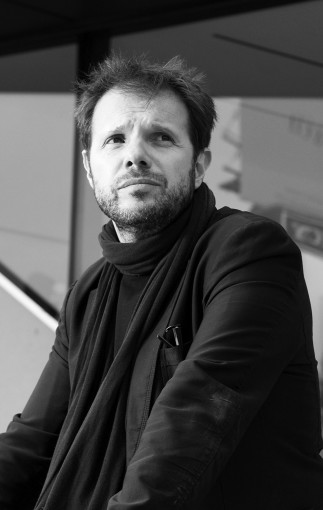 Mute Icons
Mute Icons
With the undergoing transformation of our design culture after 9.11, the financial market crash and a new age of cultural and economic austerity under way, the nature and current status of the icon in the city has come under stress with new political and social implications for its consequent architectural image.
No longer bound with a need for the demonstration of technological advancement through extravagance, exuberant complexity and verticality, the icon in today’s culture now calls for less communication and more autonomy.
In revising early principles of brutalism and its sensibility towards monolithicity and muted solid forms, the intention is not to reposition ideas of totalitarianism into what we believe to be critical speculations for current and future possibilities in the shaping of the urban environment. It is about exploring and articulating the potential of the monolithic object as a muted yet iconic aesthetic; an architecture of ambivalent mass, objectness and suppressed formal legibility that supports the need to find progressive alternatives to technological mannerism.
With the ever-increasing ease of information and image distribution across our current media culture, the representation of the icon becomes as important as the built form, especially in the reexamination of its changing role in the city. Drawing takes on its own specificity and identity, and becomes an autonomous entity where the translation of material complexities and formal legibility can only contribute to its separation from the built form. This dissociation between drawing and object demonstrates the paradoxical nature of the monolith in architecture, wherein the muted exterior is in constant contrast with its interior spatiality and its representation in drawings.
“With the exception of monuments, architecture requires space for inhabitation. If the term monolith is taken literally to suggest material solidity, monolithic architecture would be impossible by definition. However, we understand monolithic to signify monolith-like, and hence to confer a sense of solidity and homogeneity on objects that are not and could not be integrally solid and homogeneous.”
Rodolfo Machado and Rudolph El-Khoury,
Monolithic Architecture
Considering that in its allegorical mode, the use of the term “monolithic” in architecture has more to do with representational strategies than material qualities or construction systems, the mute icon can generate yet new cultural and physical images, where the abstract and material attributes collapse together to question the current obsession with hyperrealism and generate a speculative reality all of its own.
Call for papers
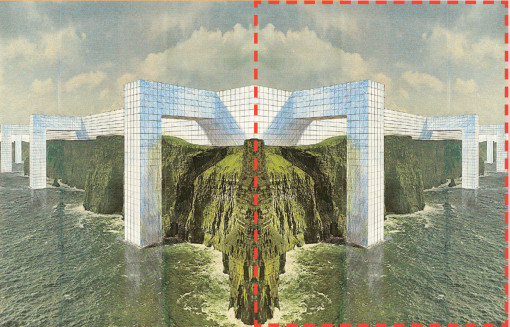 Cityvision welcomes Architects, Urbanists, Sociologists, Artists, Designers and every one interested in its Research, to contribute to this project Evolution: the architecture of future mankind.
Cityvision welcomes Architects, Urbanists, Sociologists, Artists, Designers and every one interested in its Research, to contribute to this project Evolution: the architecture of future mankind.
if you would like to contribute, submit your paper to Cityvision commenting about how, during the process of mutation of the human being for adapting his survival instinct, the cities will change in line with their inhabitants influenced by environmental forces and driven by an epigenetic development. tell us your opinion about how the future will be materialized in the evolution and resolution of the relationship between human being and technology.
……
info [at] cityvisionweb.com
Subject: contribution for Evolution – the architecture of future mankind

